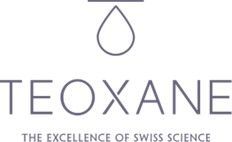Our face is naturally configured like the letter "V". The anatomy of the facial skull alone explains the tapering of the facial contours from the cheekbone over the cheeks, the chin line to the chin. The young face shows this tension in particular, with the skin, hypodermis, connective tissue, fat and muscles resisting gravity. This "V" evokes an association with youth, beauty and attractiveness in every viewer. It is (almost) irrelevant what your hair, forehead or eyes look like. Even ethical differences do not change this principle: a "V" face is always beautiful.
From around the age of 25, the first consequences of aging become apparent, also on our face. And while the lines and wrinkles are perhaps more obvious, they don't make our face any less attractive. A nasolabial fold is not the primary problem either. Weaker lips or tiny bags under the eyes are also side effects. The actual aesthetic cause is the inversion of the "V" into an "upside down V" (see image). And yet, it is precisely these changes that aesthetic medicine has focused on in recent decades. Knowing the "V" philosophy, it is understandable why treating these changes with fillers and botox is rarely successful. Because instead of restoring the "V" tension, you inject folds with lots of volume and weight, even provoking a further drop in the "V".
Based on this knowledge, we began in 2015 to inject the then newly available highly cross-linked (=stable and relatively stiff) fillers, such as Juvederm Voluma, deep into the cheekbones. The ENT doctors benefited from the anatomical knowledge from the many other operations on the face. Because in this region there are some large vessels and sensitive nerves. Step by step we also positioned the filler underneath the periosteum so that parts of the filler remained stable and in position for a long time. The results were impressive: with the reconstruction of the former malar fat body, a fixed point in the upper face could be restored, which had numerous positive consequences:
- a bulky malear body tightens the underlying cheek and reduces the nasolabial fold a bulky malear body tightens the tear trough region. This tension has a particularly impressive effect on the very delicate skin of this region. The skin of the midface that is so tense shows a better metabolism. This creates a natural juxtaposition of skin, hypodermis, elastic tissue, sweat and sebum glands and the "glow" of the skin. If this is not enough, the result can be completed with a careful filler injection in the area of the chin.














